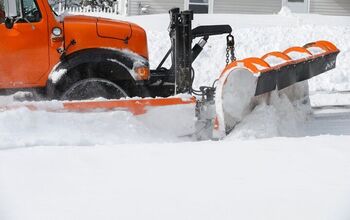How To Bat-Proof Your House

The sight of a bat is enough to make many homeowners uncomfortable. This becomes much worse when a bat manages to get into your house. If this has happened to you, you may understandably wonder how to bat-proof your house.
Seal gaps and cracks in your roof, close your chimney damper, and remove standing water in your yard to bat-proof your house. It also helps to spread eucalyptus oil around the outside of your home to repel bats. Trim your trees and bushes and remove fallen fruit from your yard to keep bats away from your home.
Call a local animal control service if you discover a bat in your house. Bats sometimes carry diseases, so it’s not worth handling them without professional help. Follow along as we explore the 10 best ways to bat-proof your house.
How Do I Protect My House From Bats?
1. Use Natural Repellents
The average bat has a strong sense of smell, and you can use that to your advantage when you bat-proof your house. Natural scents with strong odors, such as eucalyptus, peppermint, and garlic naturally repel bats. You can apply oils and extracts of these scents around your home’s perimeter to keep bats away.
The only downside to this bat-proofing method is that it is temporary if you use extracts. For example, peppermint oil eventually washes away because of rain and even dew in the morning. In that case, you must reapply the oil at least weekly if not every few days.
Oils and extracts are useful, but you may have better luck planting bat-repellent plants like garlic and peppermint. This can also keep other pests away from your home, such as snakes and mosquitoes.
2. Seal All Points Of Entry
A bat flying around in your house is a major invasion of privacy. Unfortunately, this is likely to happen if your home has many points of entry. Gaps, cracks, and unsealed parts of your home’s exterior make it easy for bats to get in.
Bats also often get into homes through chimneys and struggle to get out because of their confused state. Flue blockers and chimney caps make it hard for bats to enter your home. Always close your chimney damper when you aren’t using your fireplace or furnace.
Otherwise, birds and bats can easily get into your home, and that’s unsanitary. Closing the damper can also save on power bills as your HVAC system may not need to work as hard. Inspect your roof, siding, and windows for openings as well. You can seal gaps with caulk and expanding foam, but it’s worth calling a professional.
3. Ward Off Bugs
Bats are more likely to hover around your house if they see lots of bugs. Their diet consists largely of bugs, and they often seek out houses with lots of them. You can help repel bats if you reduce the amount of bugs in your yard.
For example, you can get rid of mosquitoes if you remove standing water, and that can also repel bats. It’s also a great idea to keep your lawn tidy and mow it regularly as unkempt lawns attract bugs. Natural repellents like citronella also keep bugs away, so bats won’t be as drawn to your yard.
Many homeowners spray their yards and houses for bugs every three months throughout spring and summer. However, it’s worth spraying your home throughout the year if you live in a warm climate with lots of bugs. The fewer bugs there are, the less likely you are to find bats at your house.
4. Eliminate Water Sources
Ponds, fountains, and swimming pools are great during the spring and summer, but they also attract bats. You must weigh the benefits of these water sources compared to how many bats you find at your house. For example, you may have seen bats fly over your pool at night in the summer.
Bats sometimes become more desperate as temperatures drop and they struggle to find steady water sources. That’s why it’s a great idea to close your pool, empty fountains, and drain ponds at this time. Such water sources attract bats, and they also attract bugs that bats like to eat.
Otherwise, you may want to make it harder for them to reach your water sources. They typically swoop down from above and take quick sips of water. Bats are unlikely to visit water sources with low-hanging branches and enclosures.
5. Use Sounds To Your Advantage
Bats can hear at high frequencies, and some sounds are enough to keep them away from your house. That’s where ultrasonic devices come into play, and they help repel many pests. Ultrasonic bat-repellent systems emit frequencies that bats simply cannot stand.
Bats typically change course and go elsewhere when they hear such frequencies. Depending on your home’s size, you may need 1-3 ultrasonic devices to repel bats. Strategically place the devices around the perimeter of your yard.
You won’t need to place the devices indoors, as they won’t want to go inside if they hear the frequency outside. Be patient, as this requires some trial and error before you can keep bats out of your yard.
6. Remove Hiding Spots
Bats are hard to detect when they hide, and they often hide and wait when given the opportunity. Common hiding spots for bats include overgrown trees and unkempt bushes. That’s especially true for fruit-bearing trees, which attract bats.
Regularly trim your trees and bushes throughout each season. This can also help keep other pests out of your yard, such as deer, rabbits, snakes, and ticks. Pruning your trees can also protect your home and windows during wind storms and tornadoes.
7. Create One-Way Doors
While it’s a great idea to seal all entry points, you may also want to provide a way for bats to exit. That way, bats won’t get stuck if they manage to get into your home. You can buy one-way bat excluders that give bats a way to exit your home, but they cannot re-enter.
The one-way doors typically fit in sheds, garages, roofs, and even the siding of your home. It’s important to provide even a single way for bats to exit your home. That way, you may not need to call a professional to help remove the bat from your home.
However, you must still keep your distance from any bat that enters your home. Bats can transmit diseases, such as rabies and salmonellosis.
8. Remove Fallen Fruit
Many types of bats eat fruit, such as bananas and mangoes. It’s hard to keep up with your fruit yield if you have healthy trees and bushes that bear fruit. Because of that, some fruit is likely to fall to the ground before you pick it.
This makes it all too easy for bats to eat and linger around your home. Check your yard daily and remove fallen fruit before bats notice it. It’s also worth removing your fruit-bearing plants if you have a consistent bat problem.
9. Keep Your Doors Closed
Leaving the door open can feel nice when there is a comfortable, cool breeze. However, this is an easy way to unknowingly let bats into your home. They can enter your home seeking food, water, and shelter, even if the door is open briefly.
Pet owners must be careful about how long they leave the door open when taking their dogs outside. Bats may quickly notice the light and slide past you into your home without you noticing them. It’s worth sealing your dog door, as they are easy for bats to fly through.
10. Seek Help
Bat-proofing a home requires some ingenuity and craftsmanship. Understandably, some homeowners may not be able to seal gaps and cracks, especially on the roof. It’s also worth calling a contractor to help with home maintenance, especially if you lack experience.
That’s much safer than getting on your roof and repairing it for the first time. It’s also worth calling your local department of health or animal control agency about your bat problem. They can answer important questions, provide tips, and safely remove bats in the case of animal control professionals.
Summing It Up
The best way to bat-proof your house is to seal gaps and cracks that bats can easily get into. Install one-way bat exclusion devices to help bats get out of your house without being able to re-enter. Get rid of standing water, fallen fruit, and bugs that would otherwise attract bats to your home.
Related Guides:

Nick Durante is a professional writer with a primary focus on home improvement. When he is not writing about home improvement or taking on projects around the house, he likes to read and create art. He is always looking towards the newest trends in home improvement.
More by Nick Durante














![10 Best Scroll Saws for 2022 [Ultimate Reviews & Buyer's Guide]](https://cdn-fastly.upgradedhome.com/media/2023/07/31/9070684/10-best-scroll-saws-for-2022-ultimate-reviews-buyer-s-guide.jpg?size=350x220)












